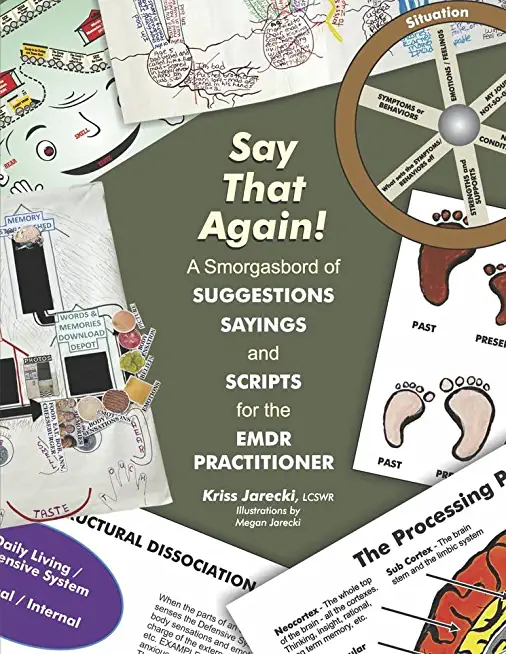
Jarecki Lcswr, Kriss
product information
description
4The book takes the therapist on a journey from hello to congratulations, you completed treatment! The journey starts with suggestions for creating a trauma-informed and trauma-sensitive office. This includes how to decorate and arrange a waiting room, training staff that also interact with clients and how to organize a therapy session. Then, you'll be introduced to four different ways to explain and illustrate the Adaptive Information Processing Modal (AIP). Via metaphors such as the sandwich analogy, you'll learn how our brain and body digest experiences, what can cause brain indigestion and ways to suggest therapies such as EMDR as a solution. This leads us into a hearty exploration of the brain on trauma. Follow the clearly written and illustrated map of how the brain (limbic and Cortexes), chemistry (Serotonin, Cortisol, etc.) and the nervous system (brain stem and Polyvagal nervous systems) work together to help our body and brain know how to react or not react in different situations (Adaptive Information Processing or AIP). Then, on to history taking. An over-all treatment approach and suggestions for mapping the road a client will follow after completing therapy. Look inside for much more
member goods
No member items were found under this heading.
listens & views

FAST TIMES AT RIDGEMONT HIGH ...
by FAST TIMES AT RIDGEMONT HIGH / O.S.T.
COMPACT DISCout of stock
$11.49

LEGENDS OF ACID JAZZ: TENOR ...
by LEGENDS OF ACID JAZZ: TENOR TITANS / VARIOUS
COMPACT DISCout of stock
$14.99
Return Policy
All sales are final
Shipping
No special shipping considerations available.
Shipping fees determined at checkout.





